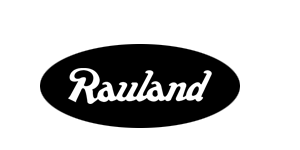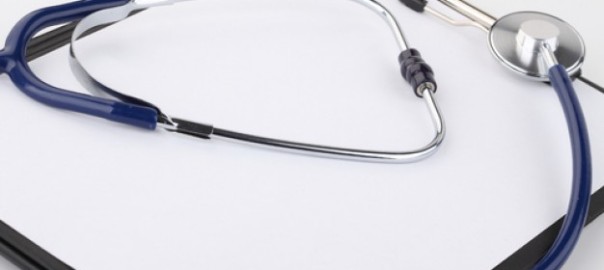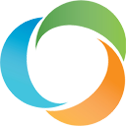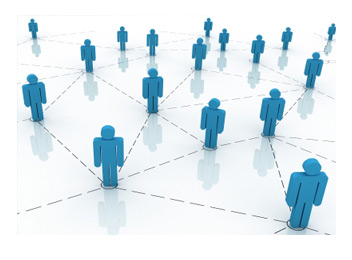Maureen Pajerski is the Executive Vice President Chief Sales and Marketing Officer for Rauland Borg Corporation. Maureen is a well-respected pillar in the nurse call communications industry who has shaped the fabric of the community with the nation’s leading nurse communication product line.
Tell me about yourself, and how you came to work at Rauland?
I started at Rauland in 1982 just after earning my engineering degree from the University of Illinois in Champaign-Urbana. While working at Rauland (a great employee benefit) I earned my MBA from the University of Chicago.
I started in Technical Support, then moved into engineering, writing all the software for an early generation nurse call system; then went on to product management, sales management, VP, etc. to my current position as Chief Sales and Marketing Officer. I joke that my responsibility is to grow sales, market share, and profitably, every year, with happy customers. My teams cover sales, marketing, technical support, and product management (including future product roadmap).
Being a Woman and an Engineer is very impressive – especially in a male dominated industry. Did you find it challenging, how did you overcome those challenges?
Actually, to be female in a male dominated industry gives you an advantage in a lot of ways. When I’m at meetings and the only female there – I’m remembered. So, as long as I’m competent it provides leverage.
My view is that a person’s ethnicity or gender is absolutely immaterial. It’s more about what they are capable of and how they do their job (character and competency). I’ve adamantly refused to join any ‘groups’ based on gender despite enormous pressure at times. To me joining a “women in leadership group” is essentially saying we somehow need a segregated club and extra/different support because we are female. I want the most qualified candidate to get the job and I want everyone to be indifferent as to whether they are female, male, black, white or purple. So, I deliberately refuse to acknowledge any reason why the fact that I am female should matter in any way.
Certainly I’ve had my amusing moments in this industry because I’m female. I was the only female in technical support and engineering, so at times there was “hesitancy” that I simply ignored. I do regret that I didn’t at least keep the letter when Oprah invited me to be in their audience focused on females in male dominated industries…
We have seen massive pressure and change in the “Call Light” industry over the last 12 months, what is your take on the shift?
We quit calling ourselves a “Call Light” system internally a long time ago because it indicates that we are nothing more than a patient pressing a button and then a nurse hearing a tone and seeing a light. We are a Clinical Communications Platform. The EMR functions as “needs to happen” and “has happened” technology. One that records and provides task oriented information about the care of the patient.
We are a platform that enables here and now communication. We are defined by our ability to enable immediacy of information between caregivers or from the patient. The ultimate goal is to provide a single view of the patient in real time. Rauland’s platform is currently the ONLY platform in a hospital that has access to the patient; wherever they are located. This enables us to integrate a variety of systems involved in patient care and provide the methodology to create action for the patient.
We also allow for this methodology to occur in its native platform vs. having to add yet another complex system (such as middleware) to provide translation and connection services. It is imperative that a Clinical Communication Platform interacts with the EMR and other systems in real time to create workflows and automate communication.
What has Rauland done to create a more collaborative environment between EMR and Clinical Communications?
Rauland, as a platform, currently and will always be about open integration. Creating the ability to share information openly between technologies is our focus – we have been doing it for years. We released All Touch this year to allow for a bi-directional communication between the EMR and our platform. The goal is to mobilize the status of the patient in real time to the care team and transform documentation into a single button push.
Think of it this way – the patient’s fall status changes throughout their stay. For example, the research points to two things that reduce patient falls: assessments and rounding. The All Touch platform enables the assessment completed in the EMR to transition the status of the patient to the clinical communication platform so that ALL of the hospital personnel and care team are fully aware. As a team, we can create a number of workflows based on real time need and workflow. Notifying all involved in the care of the patient with their needed piece of the puzzle at the right moment.
The second way to reduce falls (and other issues such as pressure ulcers) is consistent hourly rounding. Thru our vendor neutral integrations to RTLS and EMR we can validate location, time, and simplify the documentation of the round at the staff terminal. All of the information can be recorded directly into the EMR. Simple, fast, and efficient.
Each patient falls costs a hospital $13,000, on average, in addition to the stress and strain on the patient and their families. The $13,000 does not take into account the hit on the public image/perception of the facility as well. All Touch provides a way for hospitals to manage and communicate information effectively (and silently using visual indications instead of adding to alarm fatigue) and ensure consistent application/use by all staff to ensure a reduction in falls. Many studies (e.g. Studer) show that falls can be reduced between 25-65% but only if these practices are CONSISTENTLY applied and used.
Falls are just one example. We have been working with hospitals on MUSE score notifications where a patient who is potentially deteriorating receives care faster. We are the real time communication engine that notifies, signals, and creates visibility to the need as soon as the score changes to 4 or 5. This is lifesaving.
Do you find that the legacy perception of what you started with is challenging your market message?
We are a manufacturer but that doesn’t limit our ability to also be a software platform. It actually is quite powerful. The Internet of Things is more powerful than any single software platform because we are gathering data from multiple dispirit systems and transforming that information into useable information. Think about the broadcast industry and how their legacy approach of television has been disrupted by providers like Netflix and Amazon video. Their benefit is they had market share, trust in the market and reliability. Their challenge is how do you maintain a solid product to serve the market that has served you so well AND transition to the newly created market seamlessly. That has been our challenge and Rauland has a vision that leverages the reliability of hardware and the flexibility of software.
For example, mobile applications, we absolutely see the value in these as part of the clinical communications platform but we also see the need to create a path to allow the devices to mature. We’re seeing a lot of what I call “one off” solutions using mobile apps where they address one specific need or area extremely well but can’t easily be adopted to other areas or staff. Hospital environments have to deal with a lot of different challenges that are unique to that environment; things such as infection control and wireless interference get exponentially complicated the more devices are being handled and moving between rooms and patients. Each hospital is also in a different place on the continuum of adoption. For example we see some hospitals strongly embracing BYOD while others want to use more ‘industrial’ phones such as those provided by Spectralink or Cisco, and still others are extremely dependent on pagers. We believe that it is the safest, most effective, path to leverage the installed technology as the Internet of Things – to create migration to the future and allow hospitals to use both legacy and new technology. Keeping a focus on ultimately having a single, cohesive view of the patient and the care required; for ALL the staff involved in providing that care which include not just the doctor and nurses but also the therapists, pharmaceutical services, environmental services, facilities management , etc. and the patient themselves at the center.
Since the very beginning our mantra has been to have an open integration platform. This is very different then our competition. We don’t private label RTLS or manufacture handsets – we allow our hospital partners to decide what best of breed applications they want to use.
That belief of open integrations, is it beneficial for the clients or does it create more challenges?
It’s absolutely a benefit to our clients but it’s a major reason why our channel is so valuable. Look, a hospital should have the right to choose the technology that meets their needs most effectively. We don’t dictate to use one RTLS vendor or one end point communication tool because it serves us better. We have mobilized on a standard that allows for direct connection to those devices without even the need for a middleware platform. Not because we don’t think that middleware has value but we see the future where technologies should interact with one another without a middle man – we should not need a translation engine in the future.
An IDN needs to have the ability to standardize end points and RTLS without being forced into a decision based on the limitation of the Call Light. Clinical Communications platforms must be a platform that is open to the Internet of Things and it’s variability.
Integration of these technologies is not something you can go and get a degree in and Rauland’s focus is being flexible to the hospital’s choice technology or EMR. This creates an incredibly challenging environment for our VARs – the only way to learn integration is to really have field experience, particularly during this transformative stage, while direct integration standards are still in development. That’s why our competitors limit what they can and will integrate to.
You mentioned the channel – which some of your competitors have challenged recently as being an Achilles heel – what is your belief on a channel?
It’s no secret that Rauland values the channel. We see our VARs as being one of our greatest assets to the organization. The channel is what makes the product truly applicable in the hands of the hospital. We don’t treat our VARs like other companies treat VARs. We treat them as a key part of our organization. So when I am asked how many technicians we have to service our product nationwide – my response is over 1,000+ CERTIFIED technicians. We have a direct sales force of over 200 people who are backed up by highly skilled engineering teams and implementation teams. All of these people are within hours of a hospital not days – not weeks – not get on a plane and see you in a few days – hours. We serve well because they are serving well.
We have distributors who have banned together like SD6 to create SHARED best practices – you don’t see that in other industries because they are always worried about client poaching; but not ours. The whole is better because of the sum of its parts.
Rauland has created the Standards of Excellence program to ensure a consistent level expectation for customer experience across the United States and the world. It has been built by putting the best of the channel together and creating a peer level expectation. We win together – that’s what makes us great.





